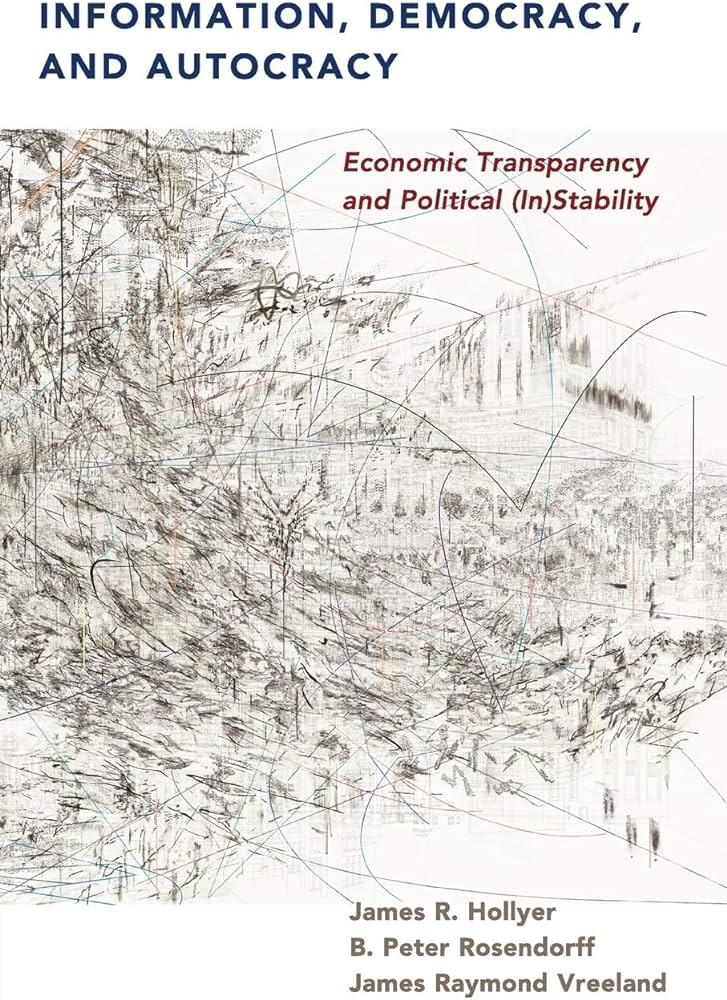Transparency encompasses many dimensions. The HRV index measures a specific aspect of government transparency: reporting national data to international organizations.
Rather than rely on expert but subjective judgments, our measure is based on objective criteria. In our early work, we considered the percentage of economic data reported by governments to the World Bank. This approach assumes that all economic measures should be equally weighed. Yet, some aspects of the economy may be more difficult to measure, and reporting some measures may truly distinguish a country as exceptionally transparent about its economy. We thus use “Item Response Theory,” a highly sophisticated and computationally intense method to estimate transparency. This method assigns different weights for reporting distinct measures of the economy, based on how many other countries actually reported data on the measure, and how much a country distinguishes itself from other countries by reporting data on a given measure. (Technically, the model estimates “difficulty” and “discrimination” parameters for each economic variable.)
Our model analyzes 240 measures of the economy consistently collected by the World Bank’s World Development Indicators. Since the World Bank obtains its data from other international agencies that, in turn, obtain their data from national statistical offices, our measure is a valid indicator of governments’ efforts to collect and disseminate economically relevant information. Moreover, because the World Bank omits data considered “questionable,” our index reflects the collection and dissemination of generally credible information about a country’s national economy. The index covers 125 countries from 1980 to 2010.
Why do some governments report more economic data than others? To disseminate data requires both state capacity and political will – neither by itself is sufficient to ensure high levels of disclosure. Consistent with this assertion, we find that poor countries are less transparent; they provide, on average, less economic data than rich countries. Importantly, however, we also find that amongst more developed countries, democratic countries are more likely to report data than autocracies. In fact, for every level of per capita income, we observe that democracies are more likely to report data than autocracies. The differences are small amongst the poorest countries, but for countries with per capita income above $2000, the differences become stark. As countries develop economically, their capacity to report data increases, but not necessarily their willingness. Since capacity and willingness are both necessary to report data, our measure of transparency corresponds jointly to levels of development and democracy.
Moreover, our estimation procedure reveals that reporting politically relevant data really distinguishes the most transparent countries. From among all the economic measures we consider, the most discriminating items overwhelmingly relate to trade and investment. Among the least discriminating items are population measures. We conclude that our index reflects more than technocratic capacity and is driven more by the willingness to disclose politically relevant data.
As an additional advantage of our measure, we report not only point estimates for each country by year, but also the upper and lower bounds for each country-year estimate (with 95% confidence), along with the standard deviations. We further provide change in transparency along with its associated upper and lower bounds. To our knowledge, we are the first to provide a transparency index with reported levels of uncertainty.
People interested in downloading the dataset will thus find the following variables:
- transparencyindex: The point estimate of the HRV index for each country and year.
- transparencyindexub: The estimated upper bound of the HRV index for each country and year.
- transparencyindexlb: The estimated lower bound of HRV index for each country and year.
- transparencyindexsd: The standard deviation of “HRV index” for each country and year.
- transdiff: The estimated one year change in HRV index for each country and year.
- transdiffub: The estimated upper bound of a one year change in the HRV index for each country and year.
-
transdifflb: The estimated lower bound of a one year change in the HRV index for each country and year.
A Stata format copy of the Index is available here and an R format copy is available here.
The HRV index of transparency provides for rich and detailed comparisons across countries, which we hope will be useful to analysts and policy-makers concerned with the determinants and consequences of transparency.
For full details about the project, see:
